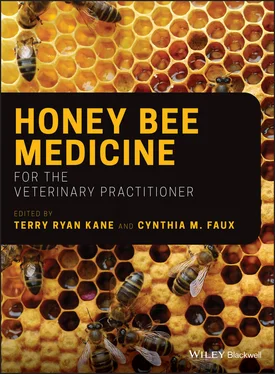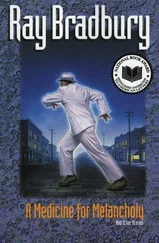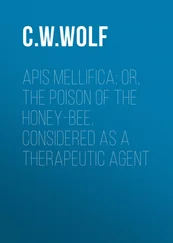In the process of supersedure, the workers often show no mercy toward a no‐longer‐wanted queen. Bees kill a queen in the same way that they kill invading hornets, by biting her and forming a tight, heads‐in, walnut‐sized ball of bees around her ( Figure 5.15). The bees then produce heat and direct it to their heads to “cook” the queen. Thus, even if one manages to “save” a queen being seriously balled, she rarely survives.
Practical application: There is great demand for “early mated” queens. But the weather does not necessarily cooperate, resulting in a percentage of early queens being poorly mated. And during shipping, temperature stress can cause loss of viability of the spermatozoa. Whatever the reason, many beekeepers report that newly‐introduced, or package bee queens, get superseded within the first month (this is not necessarily a problem).

Figure 5.13 Shaking bees through a sieve box to recover any queens. This is important when setting up a cell‐builder colony, as above, in order to mass‐produce emergency queens from selected mothers.
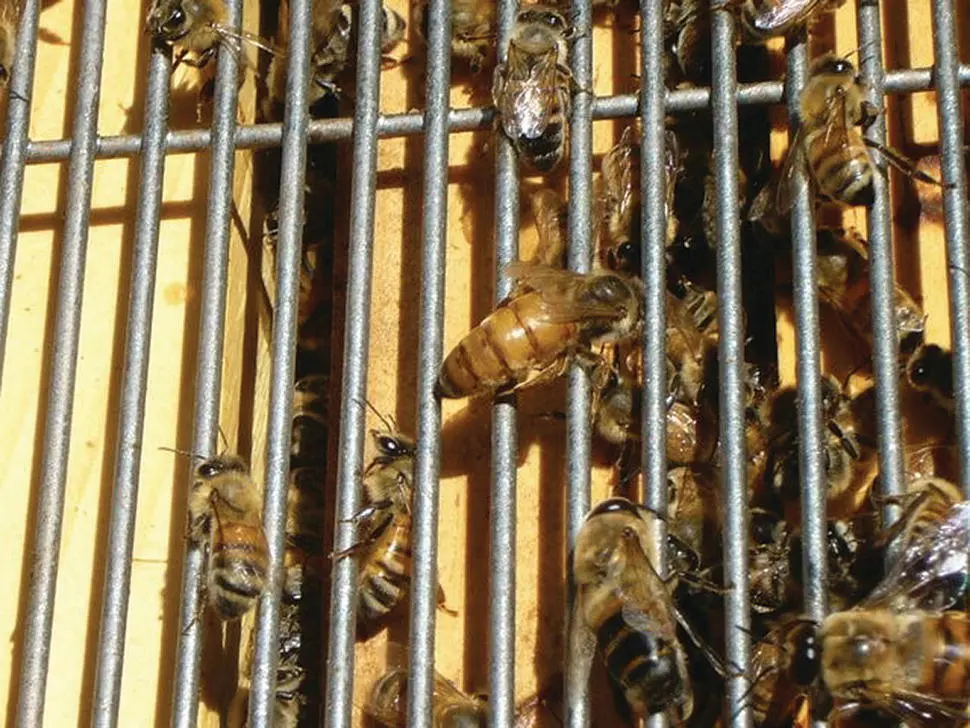
Figure 5.14 The thorax of a queen (center) or drone (lower right) is too broad to pass through a queen excluder.
“Queen failure” is a nebulous and poorly‐defined term, nowadays given in surveys as a choice for the cause of colony mortality. As such, it is often listed as the most common cause of colony loss by beekeepers (BIP 2019). This is somewhat surprising, since “back in the day,” colonies tended to quietly and efficiently replace their queens via supersedure without any help from the beekeeper, and when I review older beekeeping textbooks, the term “queen failure” isn't mentioned.
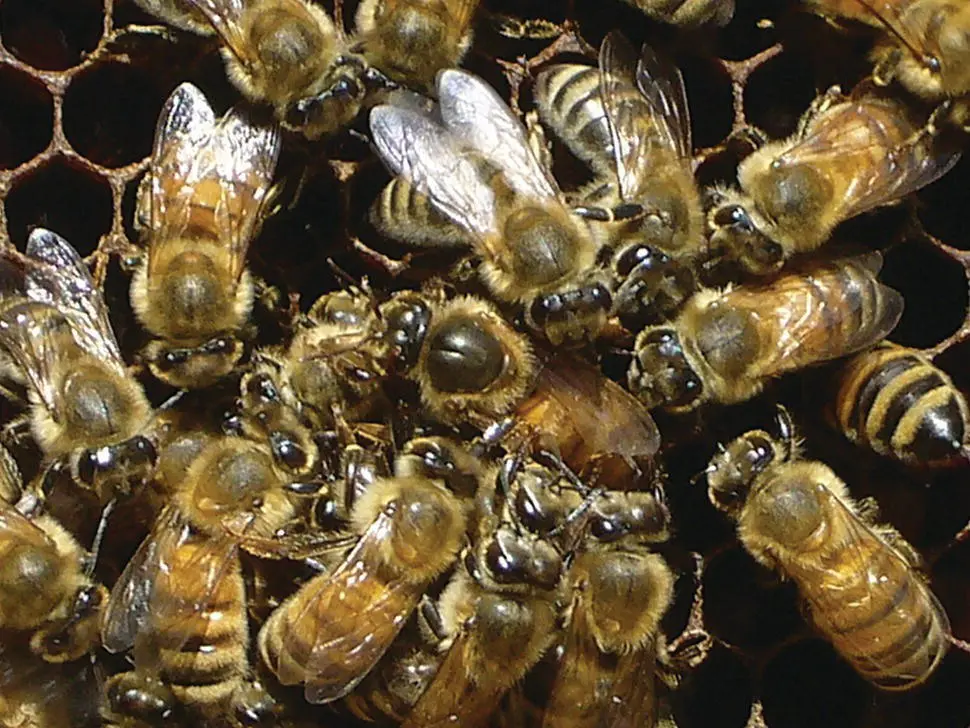
Figure 5.15 This aged queen (note the well‐polished thorax) became a “drone layer.” This photo shows her workers aggressively attempting to “ball” her to kill her.
Practical application: Infection by Nosema apis used to be strongly associated with early queen supersedure (Farrar1947 ), but this does not appear to be the case with N. ceranae, which has largely supplanted its cousin. Thus, treatment with fumagillin against nosema may no longer be necessary to protect queens.
Since the arrival of varroa, the stress from greater virus exposure, as well as miticide residues in the combs may be having adverse effects upon queen survival. Similarly, residues of some agricultural insecticides may affect queen longevity.
Practical application: The question may be, why aren't colonies simply superseding failing queens, which would prevent a “colony loss.” I wonder whether what we are now seeing is more “unsuccessful supersedure” rather than “queen failure.” Some possible suspects would be genetics, pesticide residues, miticide residues, or something to do with varroa and its associated viruses.
Given the right conditions (especially in springtime), a colony will typically divide itself and swarm, taking the old queen with them, and leaving behind “swarm cells” containing replacement daughters about to emerge.
Practical application: It is normal for a colony to reproduce by swarming once it's filled its cavity (whether a tree hollow or a hive). This normally occurs during the local “swarm season,” and especially with queens that are over a year old. Some swarming may also occur in crowded colonies later in the season.
One can generally tell whether a colony is preparing to swarm by tipping up the brood chamber (or upper brood box in a double). Most (but not all) swarm cells will be built along the bottom bars of those brood frames (Figures ).
Practical application: Queen cells are easily damaged if one attempts to cut them from a wooden frame. But frames containing queen cells can be carefully moved to a split.
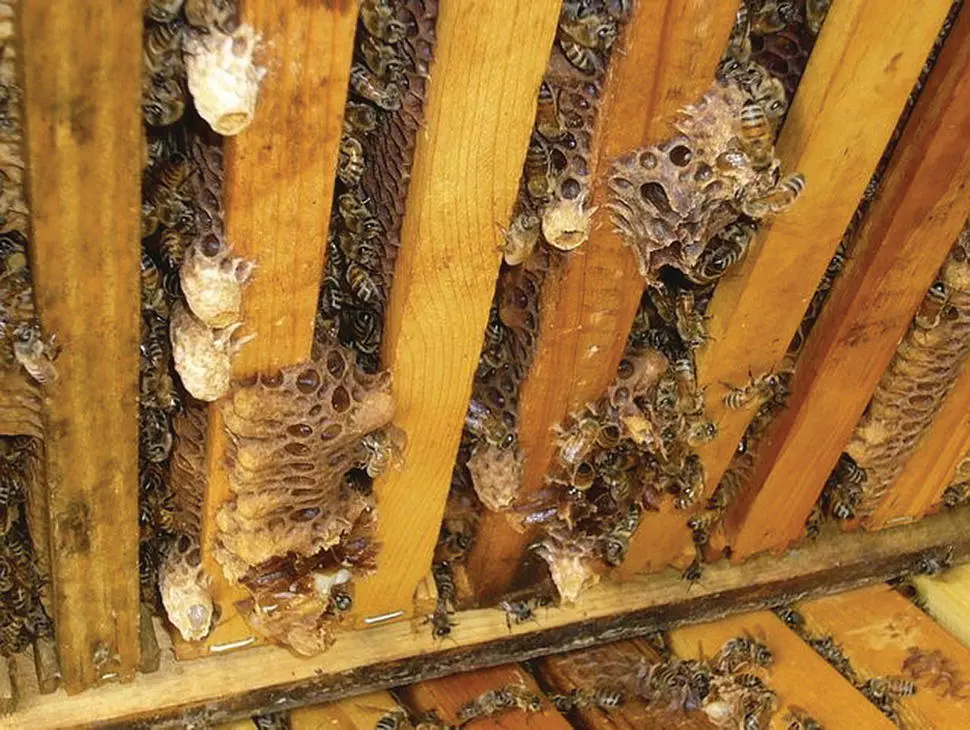
Figure 5.16Typical queen cells, some sealed, some in development, along the bottom bars of an upper brood chamber. This colony could be split, with each portion receiving at least one frame with a queen cell.
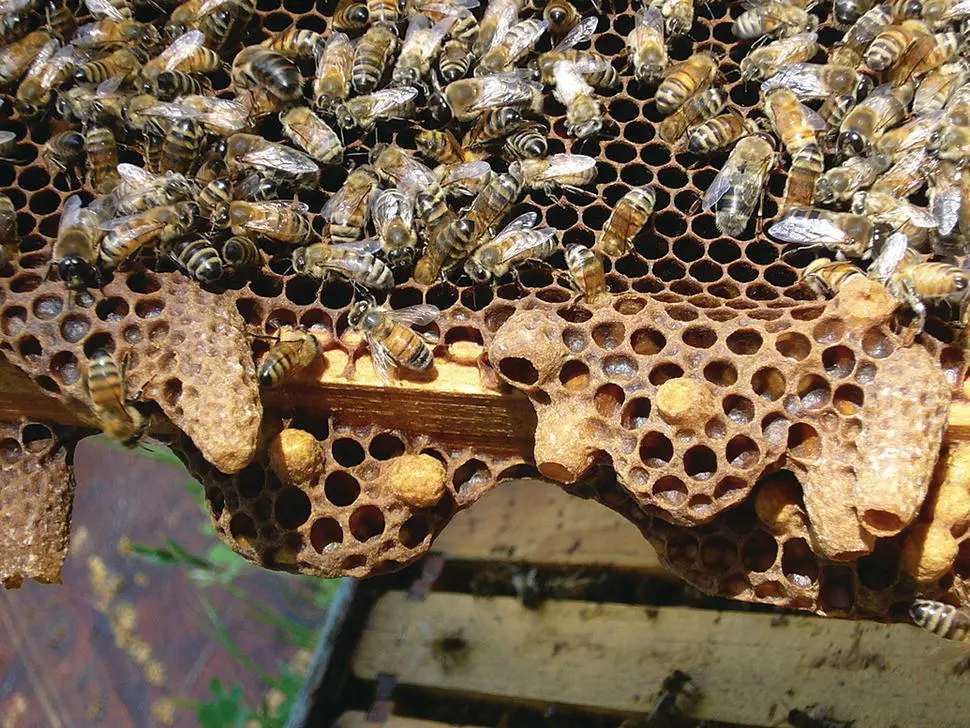
Figure 5.17Typical swarm cells along the bottom bar of the upper brood chamber.
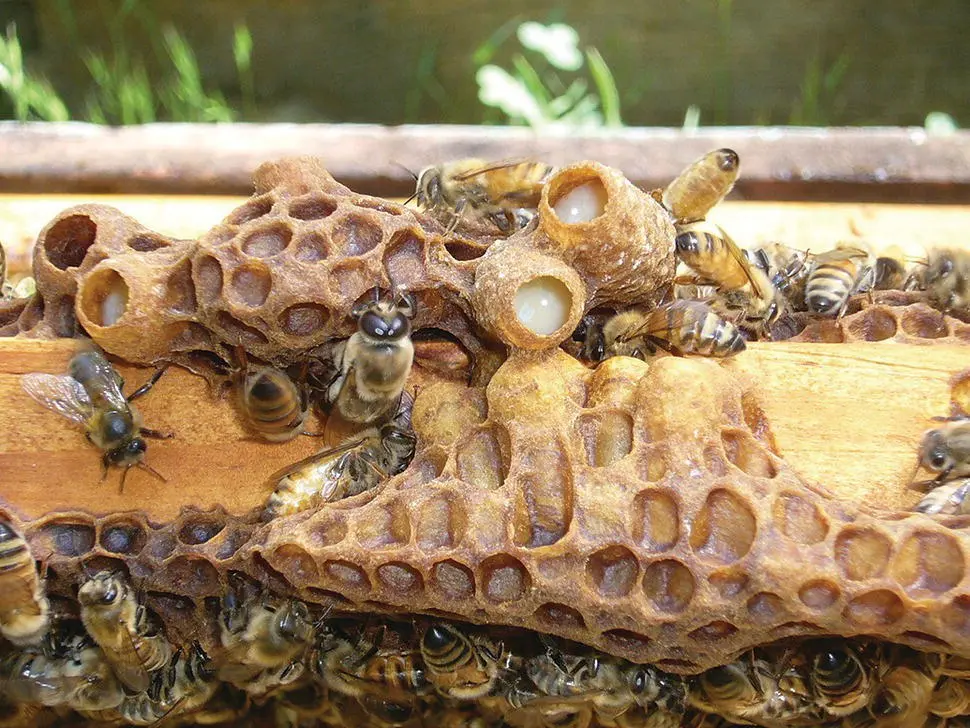
Figure 5.18Bottom view of swarm cells prior to sealing. Note the huge amount of jelly beneath the young larvae, which will be consumed after sealing of the cell. Also note the typical presence of drone cells and drones. Of interest is that the jelly fed to larvae (including the queen) allows for transgenerational immune priming via dsRNA.
Source: Maori et al. (2019).

Figure 5.19 An emerged queen cell, indicating that the colony has recently swarmed, and that it is too late to take preventative measures.
The colony swarms prior to the emergence of the queen cells. If the weather does not permit swarming, or if resources dry up, the colony will destroy the swarm cells without swarming.
Practical application: If the colony has recently swarmed, you will generally be able to see emerged cells, often with the round capping still attached (Figure 5.19 ). If, on the other hand, all the queen cells have been chewed out from the side, the colony may have “changed its mind.”
Practical application: A colony first issues a “prime swarm” containing a mated, successful, but typically aging queen. If the remaining colony is still too large for the cavity, one or more virgins may leave in “afterswarms.” Young queens will not tolerate a rival sister (Figure 5.20 ). In the case of either a swarm or an afterswarm, only one queen will be left remaining.
Swarming is coordinated by a few “experienced” workers (Rangel and Seeley 2008, 2010) rather than being controlled by the queen. The queen is pushed to exit the hive. Not all queens (which may not have flown for a year or more) are able to do so ( Figure 5.21).
Practical application: With time, the setae (“hairs”) on a queen's body get worn off, especially on the top of her thorax. This is one way to tell how old a queen is.
After emerging from the hive, a swarm temporarily bivouacs on a tree limb or other resting place while the scouts decide upon a permanent nest site. Beekeepers use this opportunity to “hive” a swarm by shaking it into an empty (not containing bees) hive ( Figure 5.22).
Читать дальше
